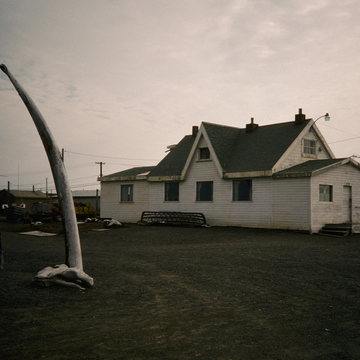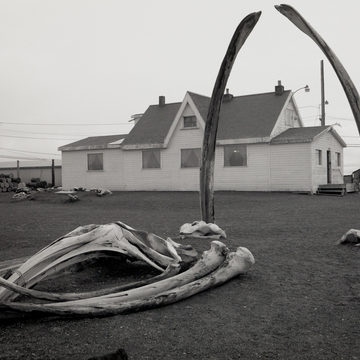You are here
Point Barrow Refuge Station (Cape Smythe Whaling and Trading Station)
The oldest wood-framed building standing along Alaska's Arctic coast, the Point Barrow Refuge Station was a manned refuge station for shipwrecked whalers. After 1854, American whalers began hunting east of Point Barrow, with frequent losses of ships and men. On 2 August 1888, thirty whale ships anchored off Point Barrow were waiting for the ice pack to open so they could enter the Beaufort Sea. A gale blew up, sending ships crashing into one another and breaking up in the heavy seas. Great loss of life was avoided only because the U.S. revenue cutter Bear and the USS Thetis were nearby and rescued sailors; the value of the lost ships exceeded $100,000. That tragedy resulted in the construction of this station.
Whalers from San Francisco and New Bedford, Massachusetts, petitioned Congress for a series of refuge stations along the coast but received only this one. Built near the site of an old U.S. Signal Corps station, 11 miles south of Point Barrow (and now within the boundaries of Barrow), the building originally was 30 feet by 48 feet with a large central room with bunks for fifty men. It had a shallow-pitched gable roof and a shed-roofed vestibule on the southwest end. A 20-ton coal bunker was attached to the northeast side.
During the seven years that it functioned as a refuge station, there were no major shipwrecks to require its services. The shady business dealings of the station's first superintendent probably also contributed to the closing of the station in 1896. The next year, more than one hundred men sought shelter for eleven months at Point Barrow when four ships were crushed by ice and four others were icebound for the winter. The Pacific Steam Whaling Company, which had bought the station, had rented it to a naturalist, Edward Avery McIlhenny, for the winter; he helped shelter the shipwrecked sailors.
In 1898, the building was sold to the Cape Smythe Whaling and Trading Company, whose manager was Charles Brower. Around 1920, he raised the roof, steepening the pitch, and added a cross gable in the front. Later, a lower addition was made to the southwest front, and other additions to the rear. The three windows across the northwest side, which faces the ocean, have been enlarged and plate glass installed. A restaurant in the building is still operated by family members.
Writing Credits
If SAH Archipedia has been useful to you, please consider supporting it.
SAH Archipedia tells the story of the United States through its buildings, landscapes, and cities. This freely available resource empowers the public with authoritative knowledge that deepens their understanding and appreciation of the built environment. But the Society of Architectural Historians, which created SAH Archipedia with University of Virginia Press, needs your support to maintain the high-caliber research, writing, photography, cartography, editing, design, and programming that make SAH Archipedia a trusted online resource available to all who value the history of place, heritage tourism, and learning.




